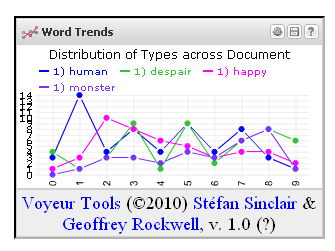Born Digital: The 21st Century Archive in Practice and Theory – DH2010
By Sarah Davenport, on 18 July 2010
I have recently undertaken the task of student assistant at the Digital Humanities 2010 conference at times being entrusted with helping to video some of the panel and parallel sessions including one of particular interest to my studies Born Digital: The 21st Century Archive in Practice and Theory. Thoughts turned to masses of born digital material created from early word processing up to blogs and tweeting that will become the archives of the future, universities have only recently begun to document not only the digital content but also the hardware used.
I will focus here on a paper delivered by Erika Farr Finding aids and files directories: researching a 21st Century Archive. Delivering a case study of Salman Rushdie’s hybrid archive held by Emory Libraries within the manuscript, archives and rare books library had been presented with a new preservation challenge in the form of three laptop computers, one Mac, one external hard drive and paper materials including doodles, writings all from the popular author Salman Rushdie. In 2006 this was the first time that whole computers had been acquired by the library. A collaborative effort between archivists, digital librarians and software engineers was required, with an emphasis on a responsibility to the researcher when given the opportunity to harvest such unique data, and images. There was a need to respect the hybrid nature of the collection, when dealing with personal, financial and material of a living author. This presented a unique policy development stage and triage where it was agreed for there to be no web access to the collection, and understandably refusal of access to any materials that had been deleted.
The product of this the Salman Rushdie Archives is a fascinating project encompassing 15 years of Salman Rushdie’s life, whereby born digital content can be placed in an emulated environment, ‘as is’, creating a researcher experience demonstrating how he used the computers, folders, labelled the folders and his application choice. Researchers can begin to understand the human interaction with the computer and how this affected the creative process, it is not simply a task to capture the content of the document but also the setting in which it was created. Early user testing is said to have found this influenced the use of keywords and search techniques. It is hoped that further user testing can begin as the collection is used in the future, for now the researcher can begin to create a critical analysis of the emulated environment as introduced here by Erika Farr The Emulated Environment: Exploring Rushdies Desktop whereby ‘efforts to capture the holders images and efforts to create tools to leverage that data’ will be of inspiration to research in the future.
I am grateful to have been selected for a student assistant bursary at DH2010 as this was one of many sessions that have inspired my dissertation looking into the implementation of metadata standards in sound archives. As part completion of my dissertation I am currently researching the resource discovery mechanisms of the Archival Sound Recordings website. This will involve user testing, and I am looking for volunteers to take part. This will take no longer than 45 minutes involving an observation of how you use the website and a short questionnaire. If you would be interested in helping me with this study please contact stephen.anderson.09@ucl.ac.uk.
——————————————————————————————————-
Cosmo Anderson is a guest author on this blog and a student on the MA Library and Information Studies programme here at UCL.
 Close
Close



